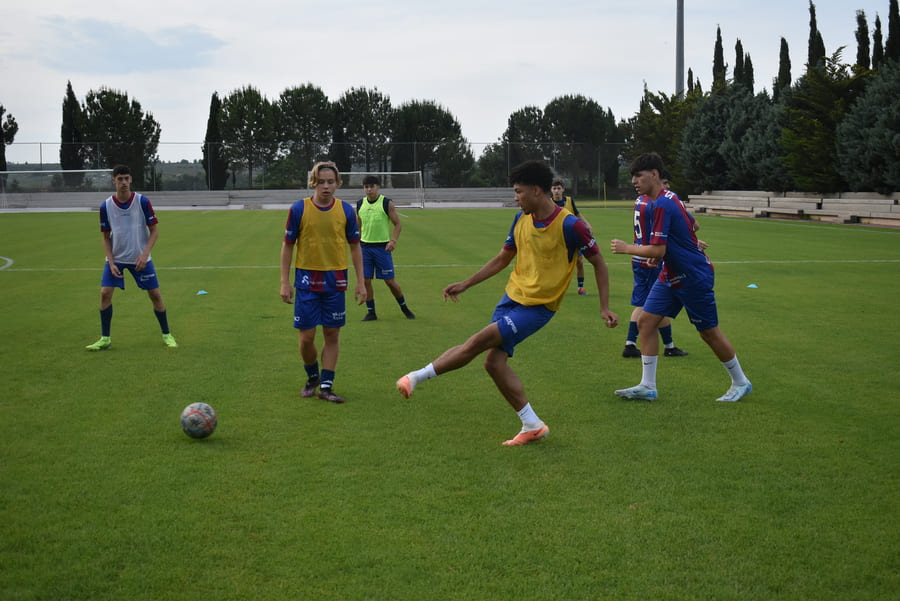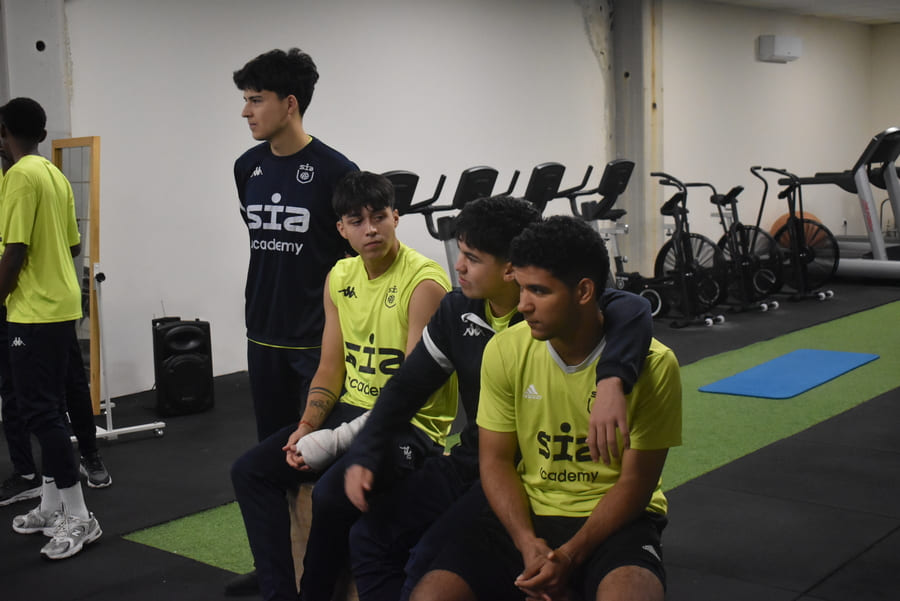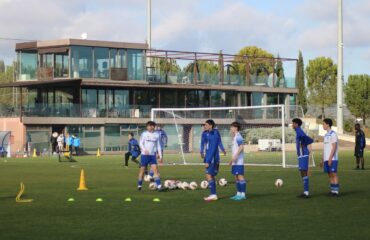Coordination is one of the most important basic physical abilities in modern football. It is understood as the player’s ability to synchronize body movements efficiently, combining strength, speed, agility, and technique according to the demands of the game. Without coordination, even a technically skilled or physically fit player may find their effectiveness limited on the pitch. At high-performance academies such as SIA Academy, this quality is constantly trained to ensure that players reach their maximum competitive level.
Table of contents
The importance of coordination in football
In football, coordination allows players to perform actions such as controlling a moving ball, quickly turning their body to receive a pass, changing direction while running, or adjusting body position in a jump to head the ball. In other words, it is a transversal component reflected in all phases of the game: attack, defense, and transition.
Ximo, fitness coach at SIA Academy, explains it clearly: “A footballer with good movement can adapt better to the changing situations of the game, make faster decisions, and execute movements with greater precision.”
Therefore, working on coordination not only improves individual technique, but also enhances the collective ability of the team to maintain a dynamic and efficient playing rhythm.

Specific benefits of coordination training
- Greater body control in imbalance situations.
- Injury prevention through optimized movement mechanics.
- Development of quick decision-making thanks to the body–mind connection.
- Increased energy efficiency by avoiding unnecessary movements.
- Improved technical execution in dribbling, passing, and shooting.
Ximo adds: “When a player masters movement, they not only gain in individual quality, but also become a more valuable asset to the team.”
Practical exercises to improve coordination in football
At SIA Academy, coordination is trained through specific and progressive exercises that combine physical, technical, and cognitive aspects. Here are six key exercises that are part of their training plan:
- Ladder with ball
Players perform footwork patterns on an agility ladder while dribbling the ball. This develops quick feet, ball control, and peripheral vision. - Lateral jumps with control
The player jumps side to side over a line or low hurdle, and upon landing must control a ball arriving from different angles. This improves stability, reflexes, and oriented control. - Cone circuit with changes of direction
Cones are placed in a zigzag pattern. The player dribbles through them and, upon receiving a signal from the coach, must change direction. This enhances reaction capacity and ball mastery in tight spaces. - Dual-task drills
Running between poles while responding to external stimuli, such as colors or numbers shouted by the coach. This strengthens cognitive and motor coordination, essential in real match situations. - Aerial control and quick passing
Balls are sent at different heights and to different body parts (thigh, chest, foot). After controlling, the player must deliver a quick and precise pass. This develops eye–foot and eye–body coordination. - Small-sided games with special rules
Reduced-pitch matches with imposed conditions: for example, playing with only two touches or passing exclusively with the weaker foot. These foster adaptability and motor creativity.

Coordination and methodology at SIA Academy
At SIA Academy, this quality is not trained in isolation but integrated into a global methodological model. This means that each exercise aims to replicate real match situations, allowing players to transfer their trained coordination into competitive play.
The fitness coach explains that the focus goes beyond the physical: “Our goal is for players to associate being coordinate with decision-making, because football is a sport where the mind and body work at the same pace.”
Modern tools are also used, such as video analysis systems, stability platforms, and neurotraining programs that allow stimuli to be tailored for each player.
Coordination is a cornerstone of modern football. It is not just about running faster or having better technique, but about combining these aspects with fluid, synchronized, and adaptable movements. In this regard, prestigious academies like SIA Academy make a difference by offering programs designed for players to develop this ability in a comprehensive way.
Training coordination through varied and specific exercises not only increases athletic performance but also helps build smarter, more complete players who are ready to compete in elite football.






